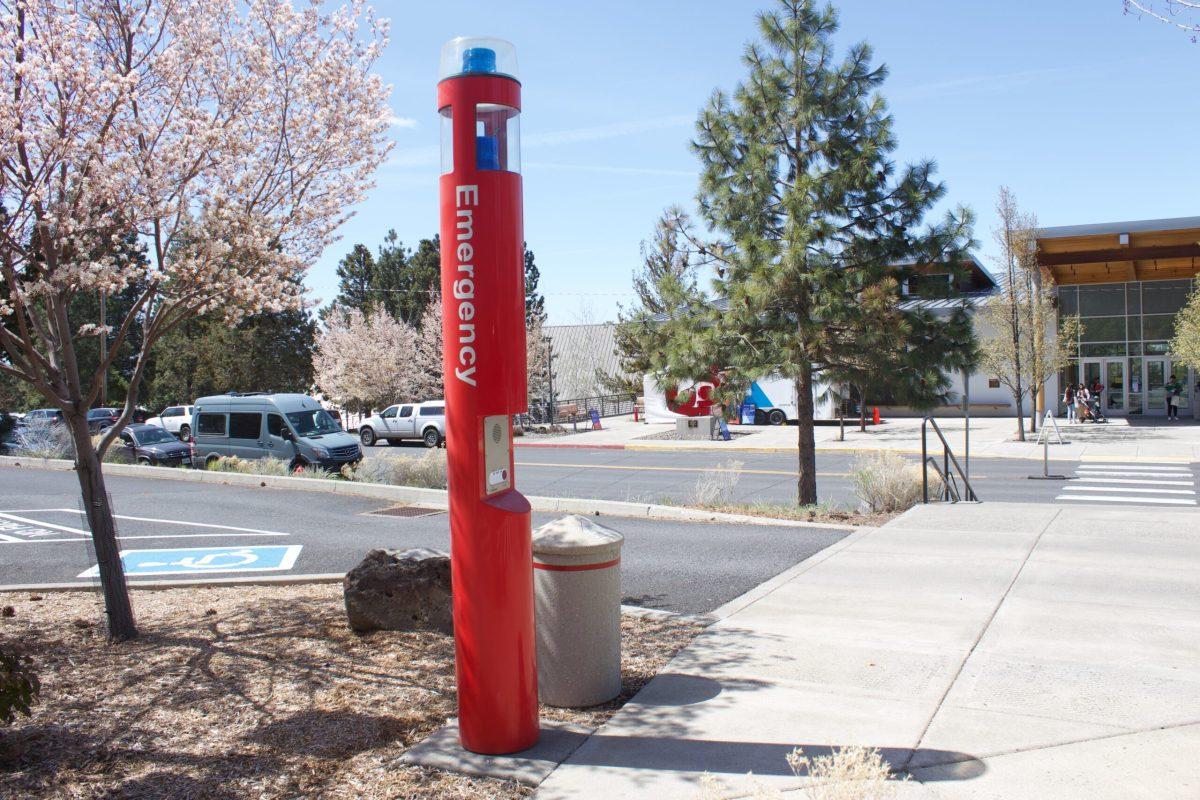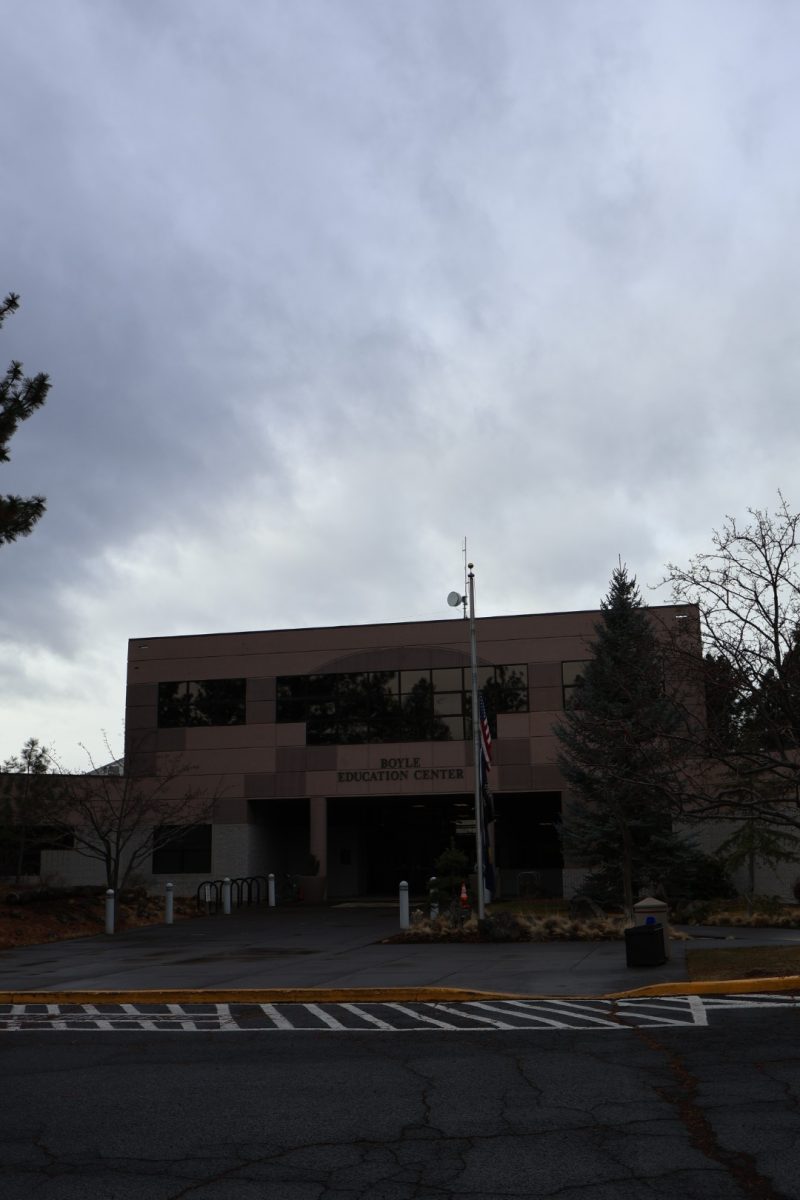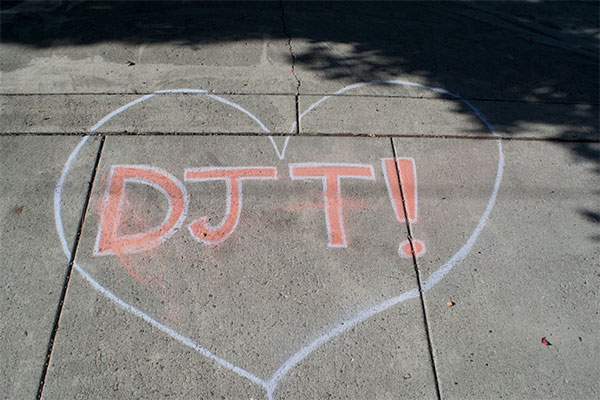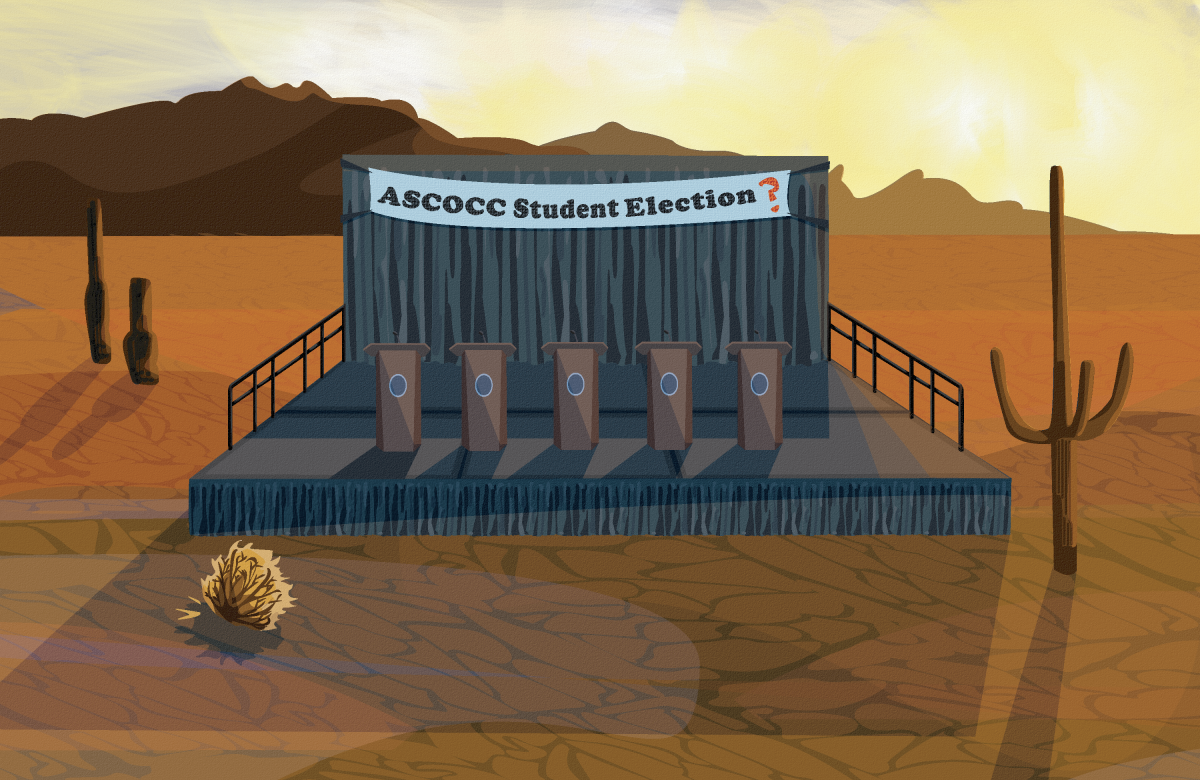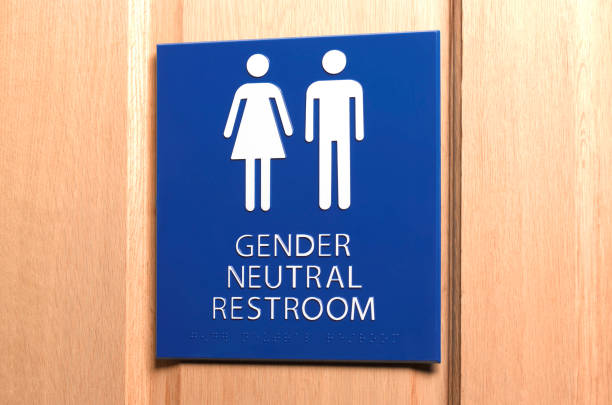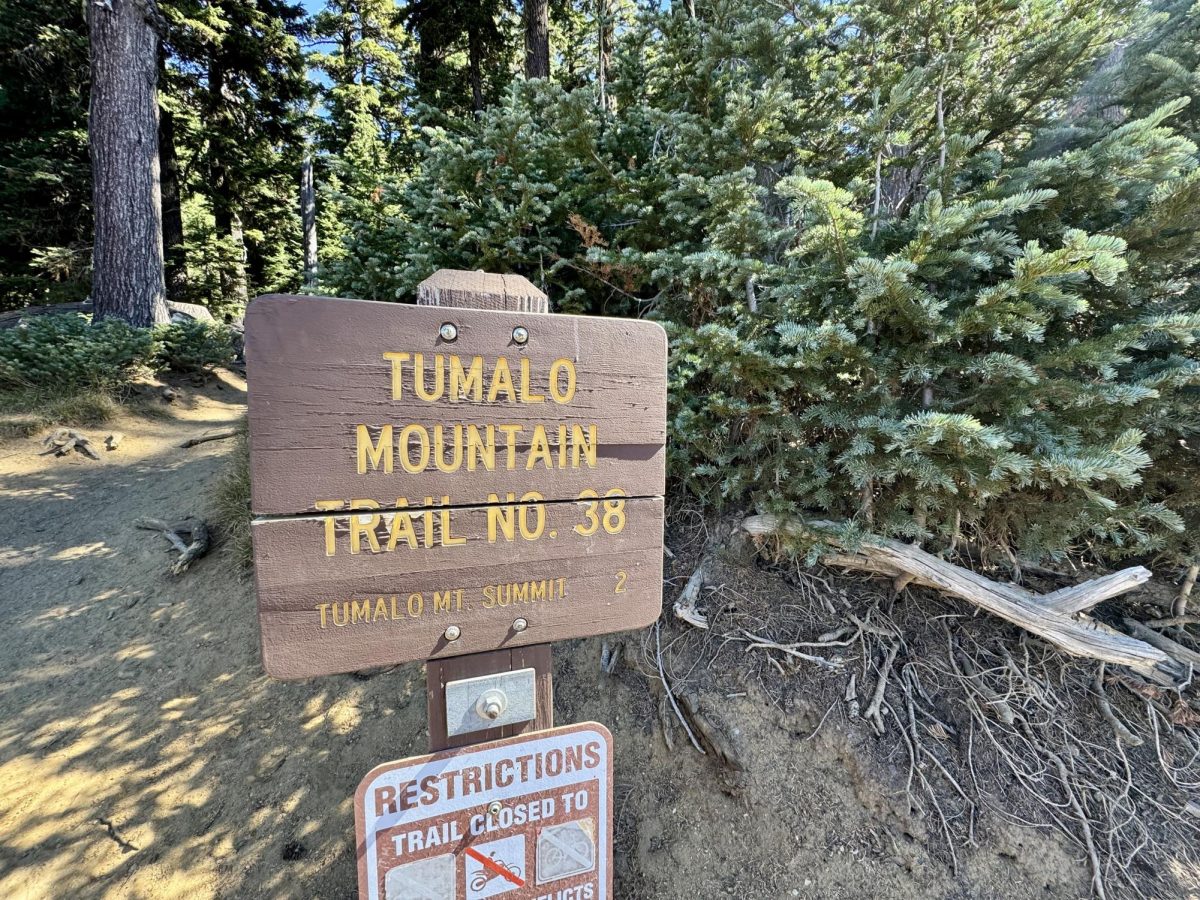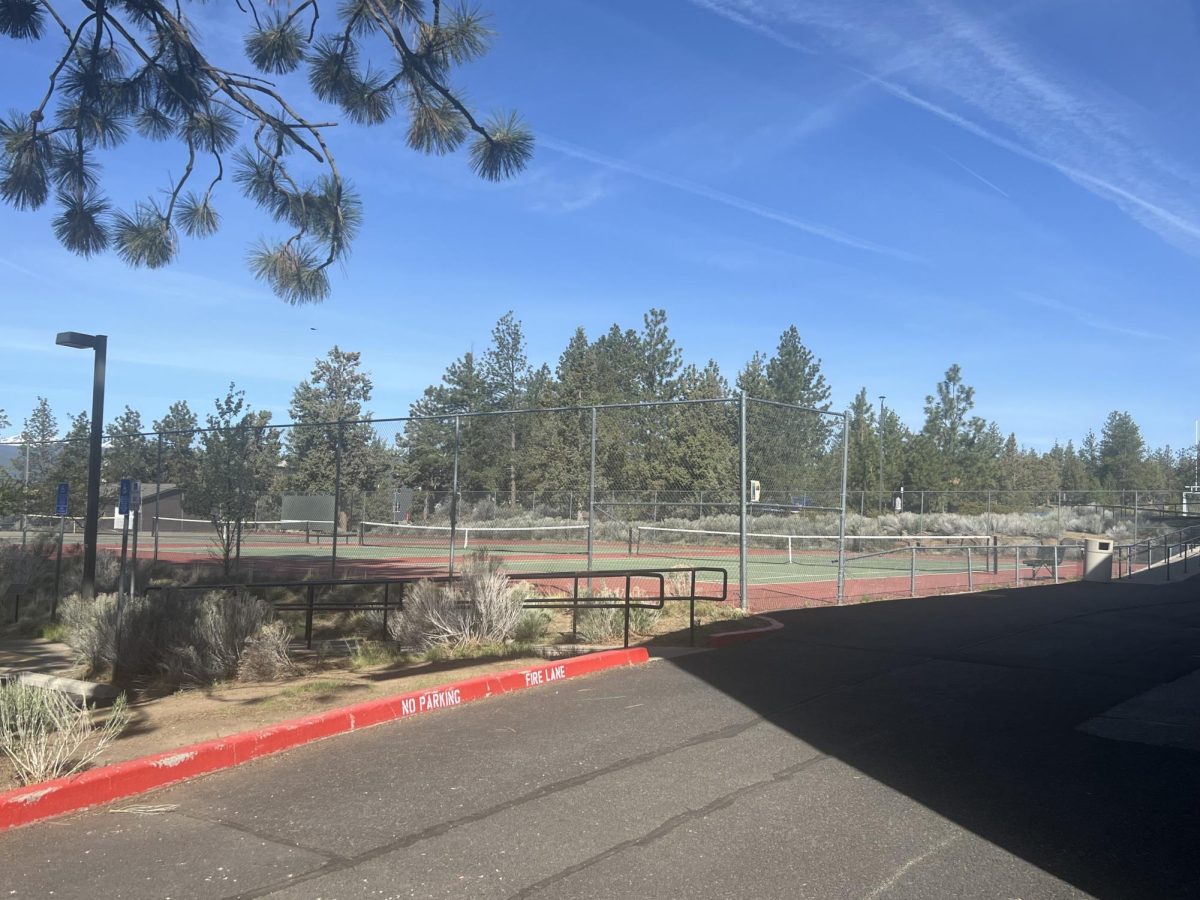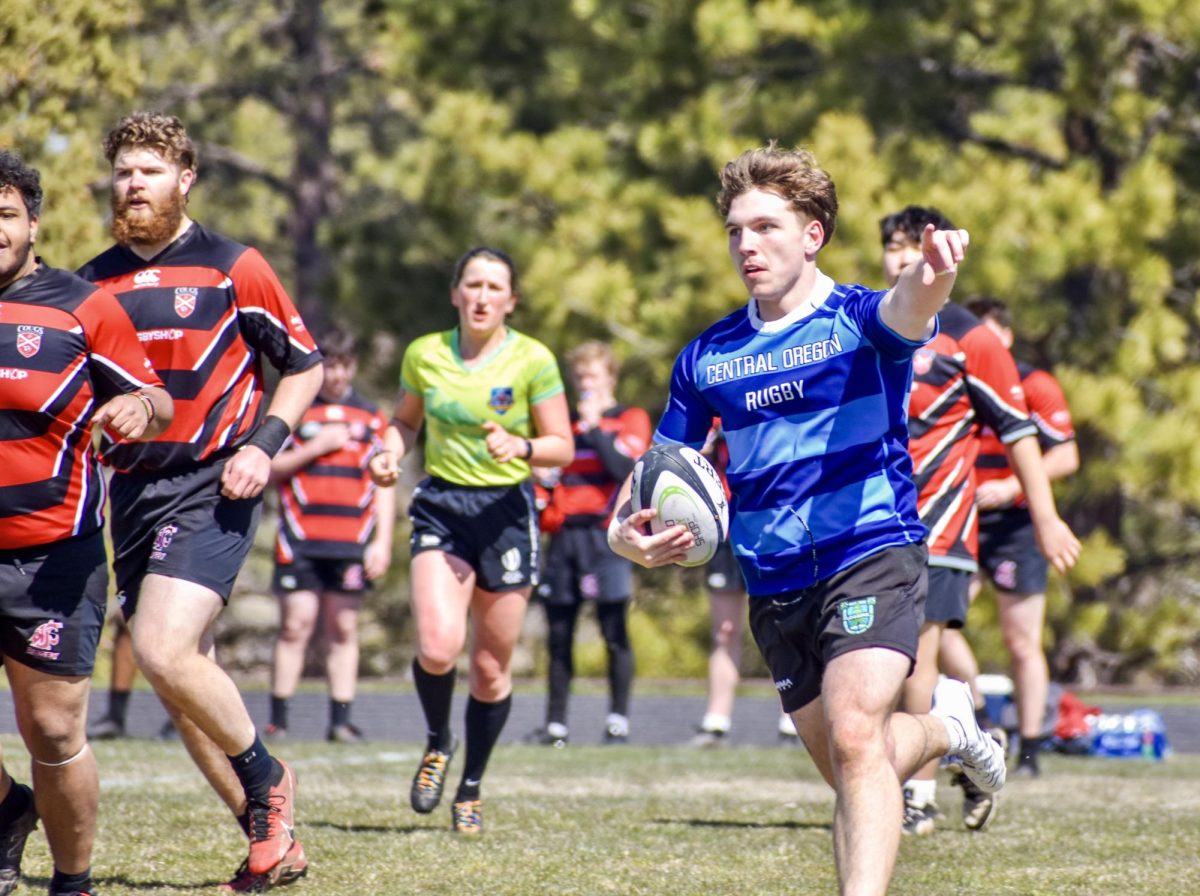Oregon State University-Cascades, the only other college in Central Oregon, has made the decision to remove their Blue Light Phones from campus. After the Blue Light Phones are removed, the college will adopt Rave Guardian, an app-based emergency communication tool, said Christine Coffin, Director of Communications at the college.
Other colleges across the nation have removed their campus blue phones in the past ten years, including University of Colorado-Boulder and Pacific Lutheran University. Despite this, COCC remains outfitted with its version of blue phones, called emergency towers.
Students, faculty, and staff at COCC have likely seen the bright red emergency towers on campus, complete with a blue light on top and a button to press in case of emergency.
When the button on the campus emergency towers is pressed, a call goes out. From 6 a.m. to 5 p.m. from Monday through Friday, emergency tower calls are monitored by campus safety. After hours, the calls are monitored by a separate security service.
Contrary to popular belief, the call does not go directly to 911. Some emergency towers call a duty phone, which is held by Andrew Davis, Interim Director of Campus Safety, during the day and a different campus administrator at night. Others call the main campus safety line during the day, and a separate security service at night.
In the event that the button on an emergency tower is pressed, a call will go through and connect to either the duty phone of the campus safety main line. Within 15 seconds, the people on both ends of the call will hear the location of the emergency tower spoken in a robotic voice. The responder will talk to the respondee, gauge the situation, and decide what the next steps should be.
In a dire emergency, it is likely that the responder will call 911 before proceeding to the location of the tower. If the situation does not require services from 911, the responder will proceed to the location as they see fit.
The campus safety department was divided on whether the emergency towers were a good device to use in an emergency.
Initially, Davis said that he encouraged people to use their cell phone rather than emergency towers in an emergency situation. This was so that they would not have to be stopped at an emergency tower when it may be better to continue to move. By using a cell phone, people could continue to evade the emergency, if necessary, rather than being stuck in one place.
Davis also said that in an emergency, people should use their cell phone to call 911 before they call campus safety.
“Our [Campus Services’] role would be more urgent but not an emergency,” said Davis.
Roger Thorsvold, Environmental Health and Safety Officer, gave parking violations and minor injuries as examples of situations that campus services could handle without 911.
In a later interview, Davis clarified that members of the COCC community can always use emergency towers if they want to. The only reason he said in the earlier interview that a cell phone would be better was because a person experiencing an emergency can continue to use it while they move around.
The emergency towers on campus are audited monthly to ensure that they function properly.
I went around during business hours to test some of the emergency towers. Every tower reached campus safety within 30 seconds from the button press, though most towers took only 10. Twice, when students saw me standing at the emergency tower they came over to check on me.
There is no mass communication sent to students on how emergency towers work. Buffy Stoll-Turton, Director of First Year Experience at COCC, did not see a point to educating students on these towers.
“These types of emergency towers are really common in public spaces, and work as you think they would,” said Stoll-Turton. “It’s self explanatory.”
For this reason, the towers are not discussed at all during orientation. However, Stoll-Turton herself was incorrect about the towers, claiming if the button was pressed, students would be connected directly to 911.
The quickest way for students to reach 911 is with their cell phones, rather than through an emergency tower. The emergency towers are still present if students want to use them, however, and will contact Campus Services when activated.


